There are no photographers who delve so deeply into the shadowlands of the human soul as Roger Ballen does. The 69-year-old South Africa-based American is transforming the CENTRALE for Contemporary Art into his own Theatre of the Ballenesque. “I'm a tortoise. I carry my home with me.”
© Roger Ballen
| Stare 5040, 2008
Also read: Roger Ballen: I fink U freeky
South Africa is summery, while Belgium is increasingly autumnal. Roger Ballen is too busy to notice the seasonal change. Surrounded by mannequins, music instruments, and masks, he sits on a wobbly chair surveying the troops that will transform the CENTRALE for Contemporary Art into the Theatre of the Ballenesque. On the wall there is an enormous blow-up of “Five Hands” (2006), a photo from his 2014 book Asylum of the Birds. On the other side, there are unpublished large-format prints from his new series Rats.
This man has had an incredibly journey. From his breakthrough series, Platteland (1994), in which he portrayed penniless white Afrikaners in and around Johannesburg, to his later books like Outland (2001), Shadow Chamber (2005), and Asylum of the Birds. And there is also the cooperation with the South African hip-hop band Die Antwoord (see below) and the installations and videos that are occupying the museum.
Who's Roger Ballen?
- Born in 1950 in New York
- Studied geology and psychology
- In the 1970s, he took a life-changing, five-year road trip from Cairo to Cape Town and from Istanbul to New Guinea
- Settled in Johannesburg in 1981 and worked as a geologist in the mining industry
- Between 1982 and 1986, he made the series Dorps: Small Towns of South Africa
- In Platteland (1995), he portrays penniless white Afrikaners in and around Johannesburg
- His book Outland (2000) inspires the hip-hop band Die Antwoord to reinvent itself
- “I Fink U Freeky”, the video that he made with Die Antwoord, goes viral in 2012
- In 2017, he had more than 30 solo shows around the world
- In that same year, the Roger Ballen Foundation, dedicated to the advancement of education of photography in South Africa, was founded
- In 2020, the Roger Ballen Centre for Photographic Arts will open
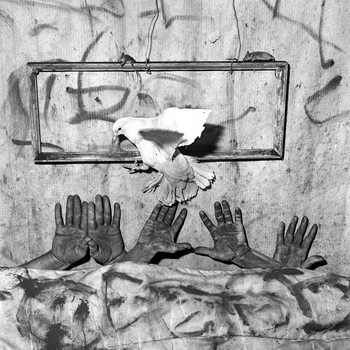
© Roger Ballen
| Five hands, 2006
In his photographs, he shows an increasingly constructed reality. The grimy walls have become stage sets. His props are electricity cables, graffiti on the wall, grubby mattresses, and animals. People have become extras. Each picture is strictly square, photographed under harsh flash light. The New Yorker who moved to South Africa in 1981 to work as a geologist in the mining industry, has created a whole world of his own, one that is still evolving.
Roger Ballen: “If you look at the work of the last 20 years, my photographs have become less street documentary and have evolved more into imagery that has a more complex relationship to the place, the subjects, and my own mind. The last years the subjects are more animals and mannequins than people. I was really depending on the people and the place and now I'm more depending on my own imagination.”
Ballen, who has lived and worked in Johannesburg for more than thirty years, has been taking pictures since he was a teenager. “My mother worked for the Magnum photo agency in New York. Way back in the 1960s she had her own gallery. So as a little boy, I met a lot of great photographers. She played a very important role in my development as a photographer. Photography is a part of my life. A joy.”
Roger Ballen has dragged over a second wobbly chair and a third for my recording equipment. I've barely asked my first question and he is already encouraging me to check whether what he says is clear on the recording. I confirm that it is, but he is not convinced and we move to a quieter place where the sound of the theatre construction will not disturb us.
In the preface to your book Asylum of the Birds, I found a quote by Kafka: “We photograph things to drive them out of our mind.” Is that what photography means to you?
Roger Ballen: In my opinion, it's important to come into contact with the subconscious, the repressed, the primal, or the shadow mind. It's a question of finding those hidden places in your mind. They give you a sense of mystery and identity. There is no formula to do that. When you have one, it never works. It just becomes repetitive and superficial; you have to find your own journey. But there is no end and no answer to this.
It's also a place beyond words. Society is obsessed with words and trying to get to places via verbal language. This journey into the mind is a non-verbal and a metaphorical journey. It is not something of which you have any understanding. The mind makes up its own journey. Not necessarily real or unreal, it is just something that happened and photography has been a means of making this journey into the mind.
A tortoise is a living thing. It reproduces itself, it digests food, it perceives the world. It has everything art should have but doesn’t
The search for identity is quite important for you, but it's not social identity you are talking about but primal identity. Humanity as the result of an evolution of thousands of years.
Ballen: Primal identity is more interesting. It's more of a challenge than social identity. Social identity is a bore. I see it on TV, I see it in magazines, I see it in newspapers. I already understood this since I was probably 10 or 15 years old. My identity: American, white, Jewish, this, that. What's so hard about understanding that? Now what is the relationship of a tortoise, an amoeba, bacteria, a dinosaur, a crocodile, and a monkey to Roger Ballen? Where is the link? How does that relate and how has that link brought forth human society? And where are all of these animals in my own evolutionary mind? That is interesting to me, that's a big challenge.
You left New York to live in Johannesburg. Has South Africa shaped you as an artist? Shaped your identity?
Ballen: That's a difficult question. It's like asking if my mother hadn't met my father, what would have happened? I don't know what would have happened if I would have been somewhere else. If you've been in a place for 38 years, it has shaped a lot of your life. From the people you associated with, to the weather, to the places I worked in, to the light. To the problems, to the inspirations. Living in that environment has played a big role in my life. I can't deny that. On the other hand, my work has been driven by my needs, my identity, mind, and creativity. I can work anywhere now. Look, now I'm making something here in Brussels that has nothing to do with South Africa. But I needed the experience in South Africa to do so. Like some of the tortoises that I have as pets, I carry my home with me. No piece of art gives me more inspiration than those tortoises.
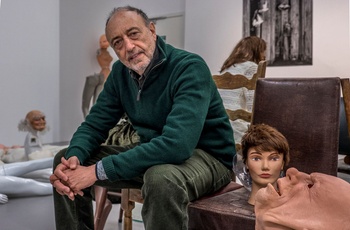
© Heleen Rodiers
| Roger Ballen surrounded by the mannequins, music instruments, and masks that will transform the CENTRALE for Contemporary Art into the Theatre of the Ballenesque
Why are those tortoises and why is nature in general such an inspiration for you?
Ballen: Because they are alive. Nothing in art is alive. A tortoise is a living thing, even a tree is a living thing. It's not just something that is sitting dead. It can make more of itself, it reproduces itself, it digests food, it perceives the world. There is a sense of the past. It has everything art should have but doesn't. Nature is always better than art. In today's society, we're alienated from nature. This metaphorical relationship with nature or this respect for nature is obliterated in most of contemporary art and photography. It's all about the sickness of contemporary society and man. There is no deeper meaning in most things you see. Obviously there are exceptions, there are great artists. But the majority of art only talks about contemporary issues. For example, if in one year, or five, Trump is gone, everybody will forget him. Do people remember about Bush? Do people remember about Johnson? Do people remember that Johnson started the Vietnam War? Nobody remembers and nobody cares. It's the same thing in South Africa. Apartheid has been gone for twenty something years. Young people never experienced it, so that is gone too. It's like the First World War in Belgium, it's gone. The thing is: life goes on and the contemporary no longer has relevance. It's the same for art. Art becomes a form of media, and for me art should have nothing to do with the media.”
Roger Ballen, the museum
Roger Ballen proudly shows me photos that he took two weeks ago on his smartphone. They are in colour. These are the most recent addition to the photographer's ever-expanding universe. Roger Ballen: “Two years ago, I did a book called Ballenesque. I wanted to make a video of the so-called Ballenesque and I used a digital camera for that. I never had one and during the shoot, I started to take some photos in colour with this digital camera. I was surprised that they turned out so well, I couldn't believe it. In fact, they were better than some of my black and white photographs. I started to build on them and shot more and more of these pictures. I always said I didn't like colour but all of a sudden this happens, so I had to take this statement off my website. (Laughs) It just happened, it was weird.”
A video of a dancing mouse swipes by on his telephone screen, then a sex doll, and a headless ferret, only to stop at a picture of his photo museum: the Roger Ballen Centre for Photographic Arts that will open in Johannesburg next year.
Ballen: “It is important to give back. I'm hoping my photography will help people to come to terms with photography and with themselves in some way or another. From what I hear from a lot of people they don't forget my photography, so it has made some contribution in some way. I think a museum like this would do the same. For an artist it's a good thing in life to have some charitable cause and an interest in offering some benefit to other people and the society you work in. You can't solve the world's problems, but you can do your little thing. That's quite important to me.”
“The whole museum will be made in concrete. I'm so happy for that. There will be exhibitions, talks, classes. I have some ideas for the first exhibitions. Somehow it has a link with what I have done, with my aesthetic. It has to be something relevant for the people in Johannesburg and also in Africa in some way or another. It's a fine line. But we'll get there.”
So your museum is not going to be a white cube?
Ballen: I hate the white cube.
So you're also happy that the CENTRALE isn't a white cube?
Ballen: (Grins) Yeah, but there is some white here. If I could have it my way... But seriously, I don't understand the logic of art against white walls, it's pathetic. It's like green lawns everywhere. A lot of people in the art world see themselves as individualistic. Most of them aren't more individualistic than anybody else in society. So they follow the lead of the white wall, no different than a businessman who wears a tie all the time. They shouldn't criticize one aspect of society when in fact they are no better. I'm nearly 70 years old. I can speak my mind. I just don't agree with a lot of things that are happening in the contemporary art world. That's my opinion.
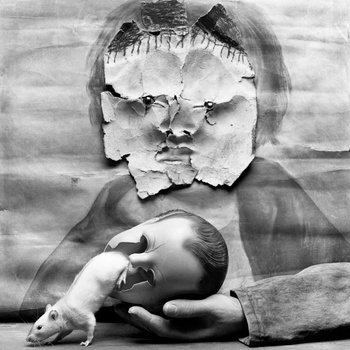
© Roger Ballen
| Startled, 2014
You don't follow the rules of the contemporary art world, but you've managed to build an audience nevertheless.
Ballen: Thinking about an audience is part of what you do. Even if you work for McDonald's you think about an audience. That is business, you know.
But I'm fortunate, I have been able to work for myself. Art has always been a passion, a journey. The day it is not, I shouldn't do art anymore. I have a PhD in geology. I did that for 25 years, I can go back to geology... I won't. (Laughs) When I turn 70, maybe, I'll go sit on an island in the Pacific and go diving. If you ask me what I like best in life, what's the most inspirational, it's diving, being in the ocean underneath the surface. It's like going into my mother's womb. But I live in Johannesburg, far away from the water, so I don't do it as much as I used to. Probably in my next lifetime. But if I go there, I'll see that I have plenty of tortoises and sea turtles, dolphins, whales, sharks, and jellyfish.
But for now, you will settle for mannequins and masks?
Ballen: That's right. That reminds me, I still need some extra props for my Ballenesque orchestra. I have to go to the flea market to find some. My favourite is on the Place du Jeu de Balle. It's where I found all my mannequins, blankets, and musical instruments.
De videoreportage over de vernissage van de expo.
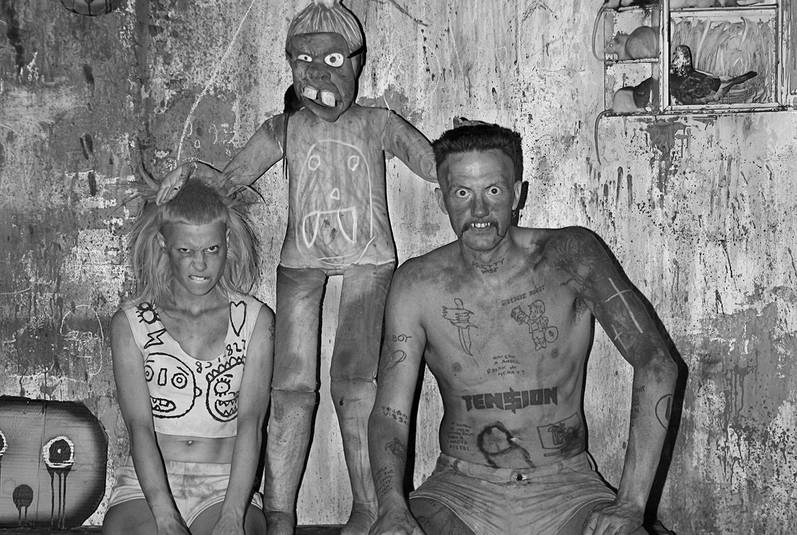
Roger Ballen and Die Antwoord are familia!
Whoever thinks of the uncompromising South African hip-hop band Die Antwoord cannot avoid the aesthetic of Roger Ballen. At the end of November, they are coming to the Ancienne Belgique to reinforce their family ties. “I think it was in 2005 that Yo-landi and Ninja emailed me to say they loved my work and wanted to collaborate somehow,” Roger Ballen says. “When they saw Outland, a book of mine, they gave up everything they did and reinvented themselves as Die Antwoord, based on the Roger Ballen aesthetic. But I didn’t want to collaborate at the time because I didn’t know them. Five years later people started writing and calling me, asking if I had seen this band that had gone viral and who were using my images and drawings. So I looked them up and realized they were talking about Yo-landi and Ninja. I had no experience of making music videos, but in 2012 we finally worked together to make the video for ‘I Fink U Freeky’. It was a mixture of their music performance and my aesthetic. We shot the video in four or five days in a house in Johannesburg where I had taken photos before. When it went up on YouTube we had one million hits in one day. It was mind-boggling that this could actually happen in the world. The most important thing about our relationship, other than knowing each other, was that it introduced my work to a lot of young people. And it also made me start making videos with each big project. Videos are more engaging, photographs end up in a book and people don’t buy books anymore.”
Read more about: Expo , roger ballen , Photography , Die Antwoord
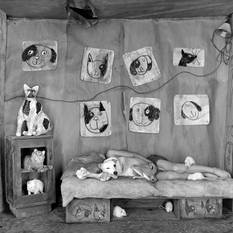
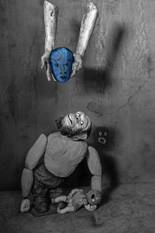
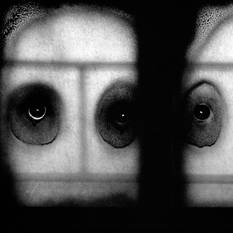
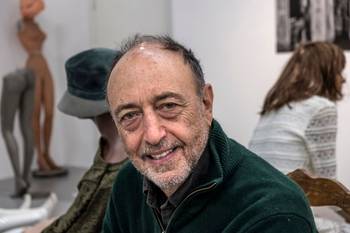
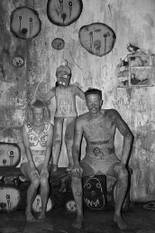
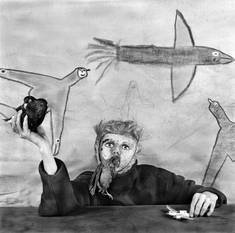

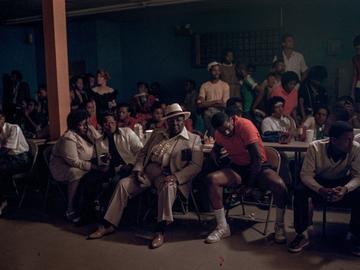
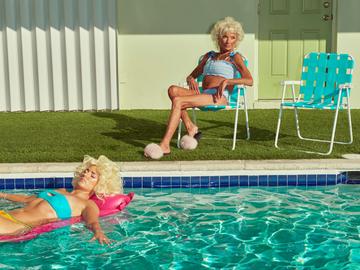
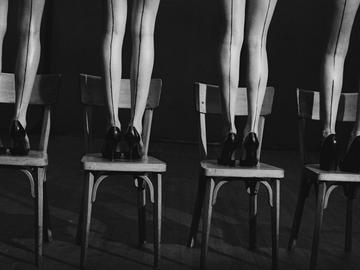
Fijn dat je wil reageren. Wie reageert, gaat akkoord met onze huisregels. Hoe reageren via Disqus? Een woordje uitleg.